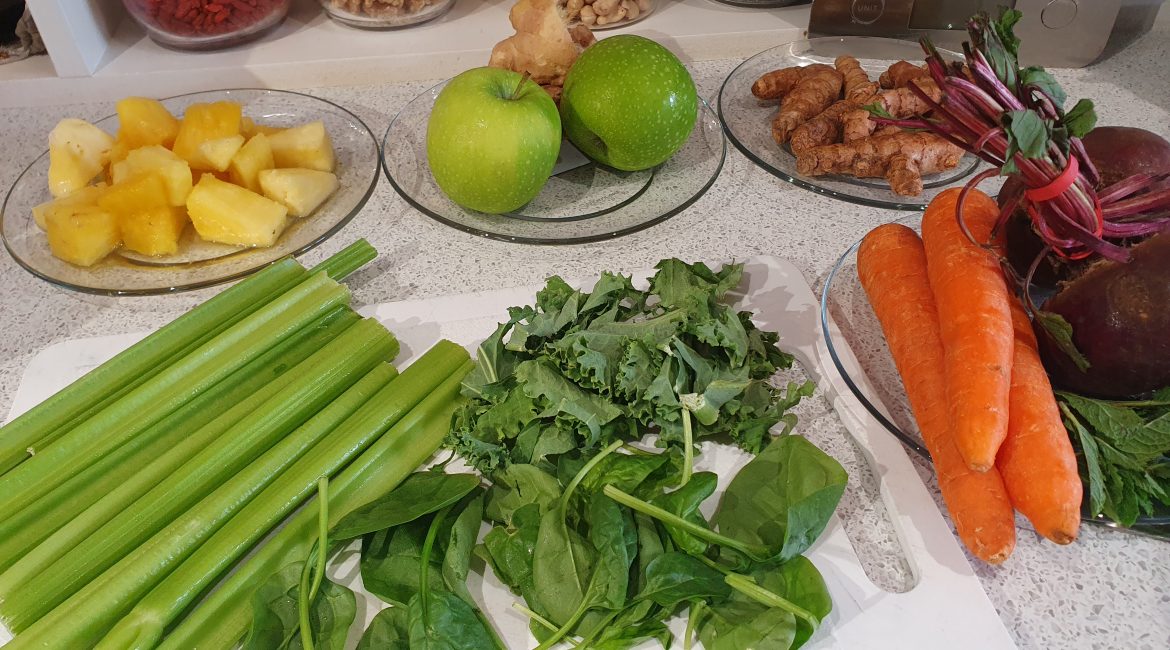Introduction
Kale, the leafy green that has taken the world by storm, is much more than just a trendy ingredient. This cruciferous vegetable packs a substantial nutritional punch, making it a rightfully earned superfood in today’s health-conscious society. In our ‘Power Green’ health shot, we’ve incorporated kale to elevate your wellness experience.
- Loaded with Vitamins and Minerals
Kale is incredibly nutrient-dense, containing high amounts of vitamins A, C, and K, as well as essential minerals like calcium, potassium, and magnesium (1). These nutrients play crucial roles in many bodily functions, such as maintaining healthy bones, supporting immunity, and promoting blood clotting. Our ‘Power Green’ health shot harnesses kale’s impressive nutrient profile to enhance your daily nutrition intake.
- Potent Antioxidant Power
In addition to vitamins and minerals, kale is rich in powerful antioxidants like beta-carotene, vitamin C, and various flavonoids and polyphenols (2). Antioxidants help protect our cells from oxidative damage caused by free radicals, reducing the risk of chronic diseases (3). By featuring kale in our ‘Power Green’ blend, we’re offering a wellness drink aimed at bolstering your body’s natural defenses.
- Heart Health
Kale exhibits real potential in promoting optimal heart health. This leafy green contains compounds that can help lower cholesterol by binding with bile acids in the digestive system, ultimately reducing their reabsorption and preventing cholesterol buildup (4). Our ‘Power Green’ health shot utilizes kale’s heart-healthy properties to support your cardiovascular well-being.
Conclusion
Kale’s remarkable abundance of essential nutrients and diverse health benefits make it a superstar addition to our ‘Power Green’ health shot. With kale’s potent nutrients in every sip, you can enjoy a delicious wellness boost while supporting your journey toward better health.
References:
- Haytowitz, D. B., & Bhagwat, S. A. (2018). USDA Database for the Flavonoid Content of Selected Foods Release 3.3. U.S. Department of Agriculture.
- Steck, S. E., Tunnel, B. L., & Wise, C. F. (2020). Bioactive food components for cancer prevention and intervention. In Bioactive Food as Dietary Interventions for Liver and Gastrointestinal Disease (pp. 289-301). Academic Press.
- Phaniendra, A., Jestadi, D. B., & Periyasamy, L. (2015). Free radicals: properties, sources, targets, and their implication in various diseases. Indian Journal of Clinical Biochemistry, 30(1), 11-26.
- Xu, C. L., Sun, R. L., Qiao, X. L., Xu, C. C., Shao, Q., Jiang, Q., & Myint, K. Z. Y. (2013). The interaction of the main components from the traditional Chinese drug pair Shaoyao-Gancao: Computational approach. Journal of Molecular Graphics and Modelling, 44, 234-241.




